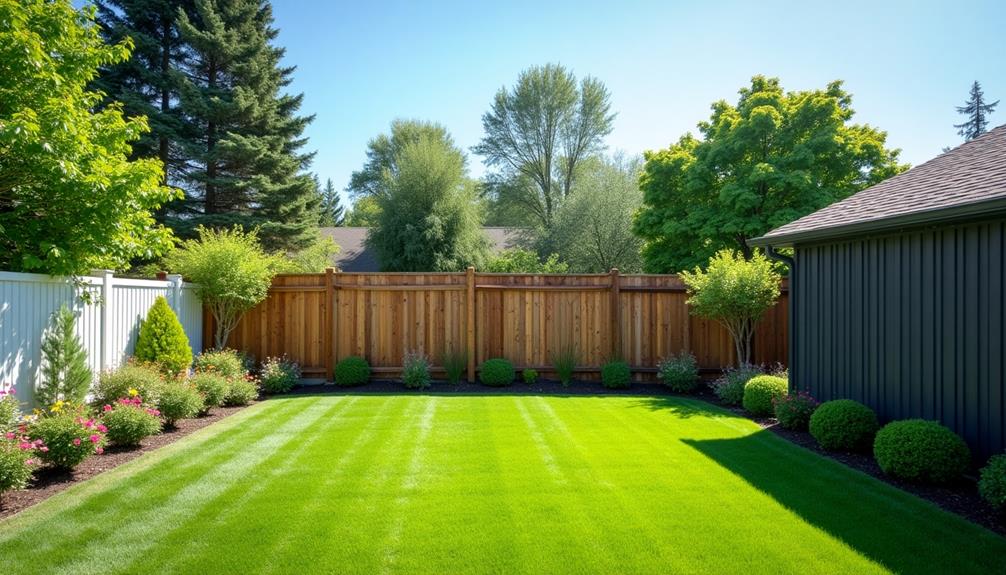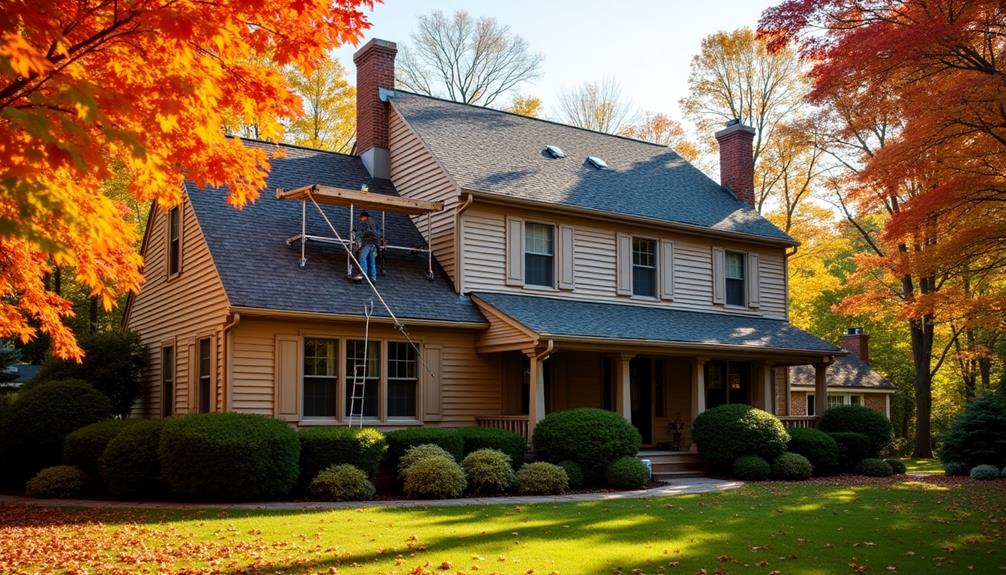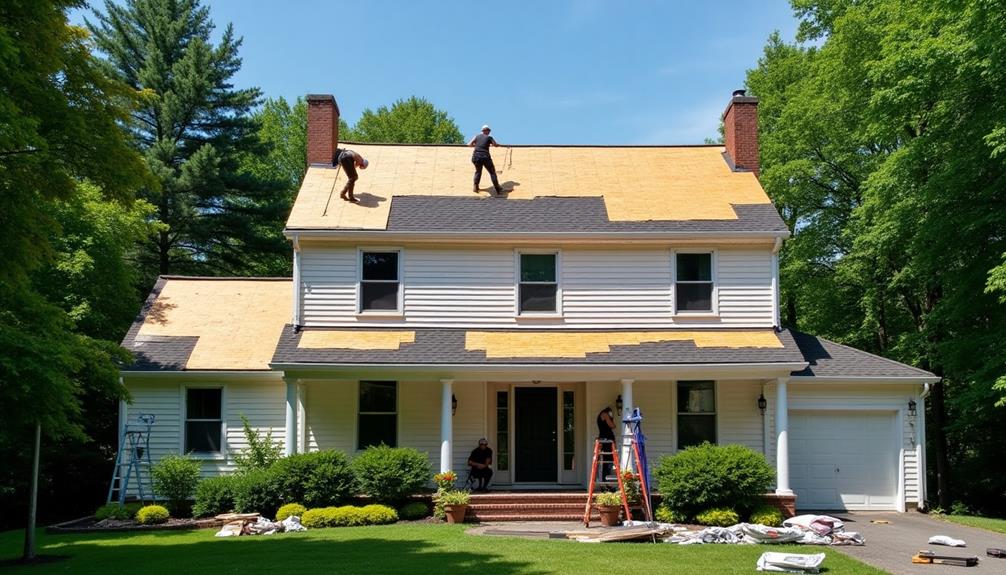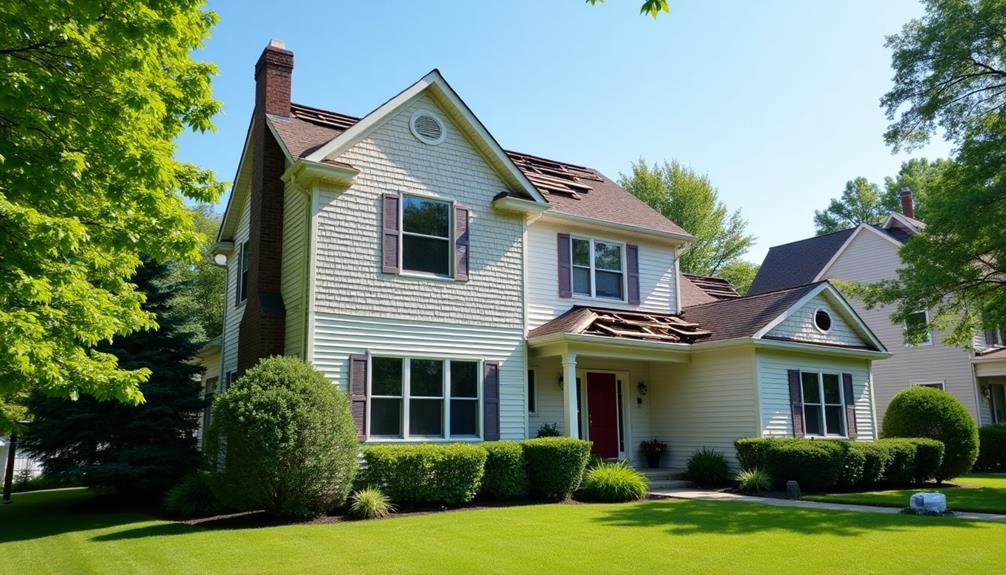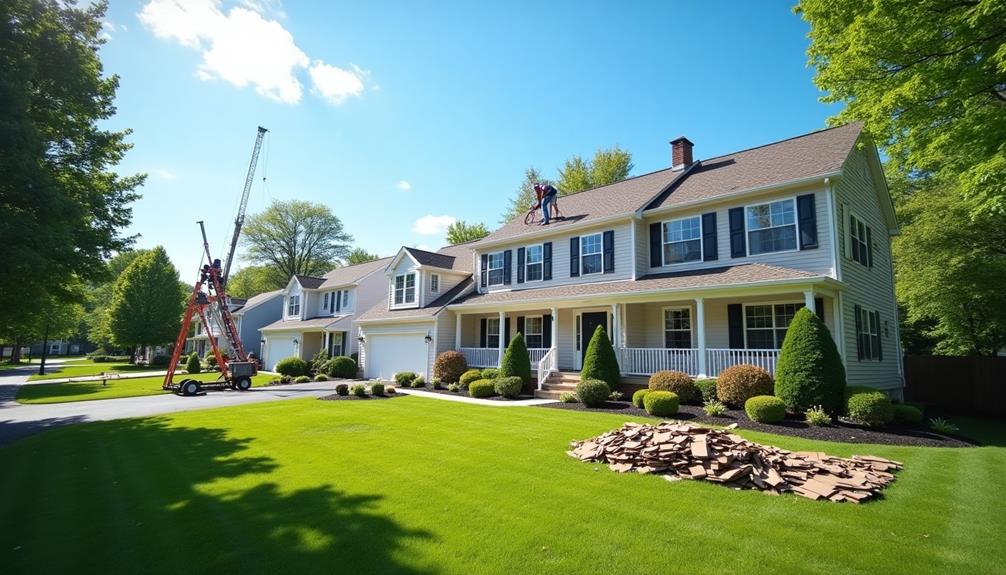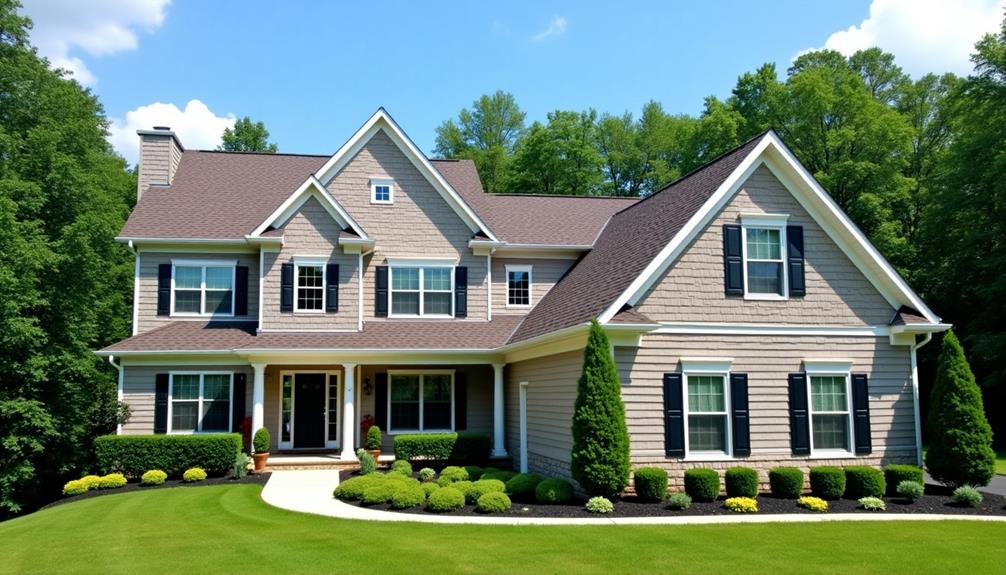Like the walls of Troy, your fence serves as a crucial barrier that protects your home and defines your space. But choosing the right fence isn't just about fortification; it involves assessing your unique needs, whether they be privacy, security, or aesthetics. You'll need to navigate various materials and styles while keeping local regulations in mind. With so many factors at play, understanding how to find the perfect balance can seem daunting. Are you ready to explore the options that can enhance both your property's value and your peace of mind?
Understanding Your Needs
When it comes to choosing a fence for your home, understanding your needs is crucial. Start by identifying the primary fence purpose. Are you looking to enhance privacy, secure your yard, or keep pets contained? Each purpose will guide your decision-making process.
For instance, if privacy's your main concern, consider taller fences made of solid materials.
Next, think about your aesthetic preferences. Your fence should complement your home's style and the surrounding landscape. Do you prefer a classic wooden look, or are you drawn to modern metal designs?
Visualize how different materials and colors will mesh with your property.
Additionally, consider local regulations and any homeowners' association guidelines that may affect your choices. Keep in mind that your fence can significantly impact your home's curb appeal, so it's worth investing time in this decision.
Lastly, don't forget about maintenance. Some materials require more upkeep than others, which can influence your long-term satisfaction.
Popular Fencing Materials
When it comes to fencing, you'll find a variety of materials that can suit your style and needs.
Wood fencing offers classic charm and versatility, while vinyl fencing is known for its durability and low maintenance.
Let's explore these popular options to help you make the best choice for your home.
Wood Fencing Options
If you're considering a natural look and sturdy option for your yard, wood fencing could be the perfect choice. It offers a timeless appeal, fitting seamlessly into various landscapes while providing a sense of privacy and security.
One of the standout options is cedar fencing, known for its durability and resistance to decay. The cedar fencing advantages include its natural oils that repel insects and its ability to withstand harsh weather conditions, making it a smart long-term investment.
You can choose from a variety of rustic wood styles, which can enhance the character of your property. Whether you prefer the classic picket fence, a solid board fence for increased privacy, or a split rail design for a more laid-back look, wood can cater to your aesthetic preferences.
Keep in mind that wood fencing requires some maintenance to preserve its beauty and longevity. Regular staining or sealing can prevent warping and protect against the elements.
Vinyl Fencing Benefits
While wood fencing offers a classic charm, vinyl fencing presents a modern alternative that comes with numerous benefits.
One of the standout features of vinyl fencing is its exceptional durability. When you look at a durability comparison between vinyl and wood, you'll find that vinyl can withstand harsh weather conditions without warping, splintering, or rotting. This means less maintenance for you over the years.
Another great advantage is the aesthetic appeal of vinyl fencing. It comes in a variety of colors and styles, allowing you to choose an option that perfectly complements your home.
Unlike wood, which may require regular painting or staining, vinyl maintains its color and appearance for years without fading.
Additionally, vinyl fencing is eco-friendly, as it's often made from recycled materials and can be recycled again at the end of its life.
Different Fence Styles
Fences come in a variety of styles, each offering unique benefits and aesthetics to complement your home. When choosing a fence, you'll want to consider whether you prefer modern designs or traditional styles, as both can significantly impact your property's overall look.
Modern designs often feature clean lines and minimalist aesthetics, perfect for contemporary homes. Think aluminum or horizontal wood slats that create a sleek, sophisticated appearance. These materials aren't only stylish but also require less maintenance, allowing you to enjoy your space without constant upkeep.
On the other hand, traditional styles bring warmth and charm to your property. Classic options like picket fences and wrought iron gates evoke a sense of nostalgia, making them ideal for homes with a historic or rustic appeal.
These fences often enhance curb appeal and can be customized with various finishes to suit your taste.
Ultimately, the fence style you choose should reflect your personality and complement your home's architecture. By carefully considering your options, you'll find the perfect fence that balances aesthetics, functionality, and your unique vision for your outdoor space.
Local Regulations and Permits
Before you start building your fence, it's crucial to research local ordinances and any specific regulations that apply in your area.
You'll also need to navigate the permit application process and understand any height restrictions that may impact your design.
Ignoring these details could lead to costly fines or having to remove your fence later on.
Research Local Ordinances
When planning to install a fence, it's crucial to research local ordinances and regulations that may affect your project. These rules can dictate everything from fence height to materials used, influencing both the practical aspects and fence aesthetics. Ignoring them can lead to costly adjustments or even fines.
Start by checking with your local zoning office or homeowners association to understand any restrictions that might apply. For instance, some areas have specific guidelines regarding how close you can build to property boundaries. Knowing your property lines is essential, as encroaching on a neighbor's land can create disputes.
Additionally, consider the style and appearance of your fence. Regulations may restrict certain designs or colors, impacting how well your fence blends with the neighborhood aesthetics.
Some communities even require approval for specific fence styles to maintain a cohesive look.
Permit Application Process
Navigating the permit application process can seem daunting, but understanding the requirements is essential for a smooth fence installation.
First, you'll need to determine the specific permit types required in your area. Some locations might require a simple fencing permit, while others may have additional approvals based on the fence height or materials used.
Next, check the application timeline. It can vary significantly depending on your local regulations. Some jurisdictions process applications quickly, while others might take weeks or even months.
To ensure you're not caught off guard, it's wise to submit your application well in advance of your planned installation date.
Gather all necessary documentation, including site plans and property lines, as these can expedite the review process.
Don't hesitate to reach out to your local planning or zoning office if you have questions; they're there to help you navigate the guidelines.
Fence Height Restrictions
Understanding fence height restrictions is crucial for any homeowner planning to install a fence. These regulations vary by location and can significantly impact both fence aesthetics and your privacy concerns.
Most municipalities have set guidelines that dictate the maximum height for residential fences, often distinguishing between front and back yards. Typically, front yard fences may be limited to around 3-4 feet, while back yard fences might reach up to 6-8 feet.
Before you start your project, it's essential to check your local zoning laws and homeowner association rules. Failing to adhere to these regulations can lead to fines or even the requirement to remove the fence entirely.
When considering fence height, think about how it affects your property's overall look. A taller fence might provide better privacy but could clash with the neighborhood's aesthetic. Conversely, a lower fence can enhance the visual appeal but mightn't offer the seclusion you desire.
Always secure necessary permits before installation and consult with your local building department for any specific guidelines that apply to your area. This ensures you're creating a beautiful and compliant space around your home.
Installation Considerations
Installing a fence involves several key considerations that can impact both the process and the final outcome.
First, you need to think about the fence placement. Determine where you want the fence to go, keeping in mind property lines and any local regulations. It's wise to mark the intended area clearly before you start, as this will help avoid disputes with neighbors later on.
Next, consider the soil conditions. The type of soil on your property affects how deep you'll need to dig post holes and what materials will work best. Sandy soil drains well but may require deeper posts to ensure stability.
Clay soil, on the other hand, can retain water and may necessitate drainage solutions to prevent rotting.
Lastly, assess any obstacles in the area, such as tree roots or underground utilities. These can complicate installation and may require adjustments to your original plan.
Maintenance and Care
Proper fence maintenance is essential to ensure durability and aesthetic appeal over the years. To keep your fence looking its best, you'll want to prioritize regular fence cleaning. This means removing dirt, debris, and any potential mildew or mold buildup. A simple mixture of water and mild detergent can work wonders—just scrub with a soft brush, rinse thoroughly, and let it dry.
Seasonal upkeep is equally important. In the spring, inspect your fence for any damage caused by winter weather, such as loose boards or rusted hardware. Repair any issues promptly to prevent further deterioration.
In the fall, consider treating your wooden fence with a sealant or stain to protect it against moisture and UV rays.
Don't forget to check for overhanging branches or vegetation that might rub against your fence or cause damage. Trimming these back can prolong your fence's life.
Budgeting for Your Fence
When planning for a fence, it's important to consider your budget alongside maintenance needs. Start by determining how much you're willing to spend. Fencing materials vary significantly in price, so knowing your limits can help you narrow down your options.
Look into various fence financing options that might suit your financial situation. Many companies offer payment plans or financing to make your investment more manageable. This can help you get the fence you want without straining your budget.
To save costs, consider DIY installation if you have the skills. This can cut labor expenses significantly. Additionally, think about choosing materials that require less maintenance, like vinyl or composite. They may have a higher upfront cost but can save you money in the long run.
Keep an eye out for seasonal sales or discounts to further stretch your budget. Also, don't forget to factor in any permits or installation fees you might encounter.

